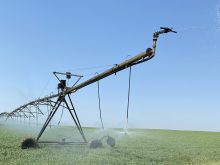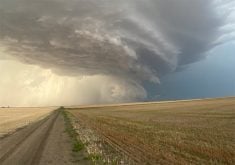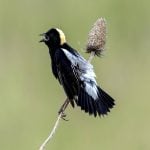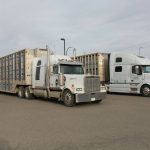In top sheep producing countries, it is routine for producers to use ultrasound to scan for pregnancies.
But in Saskatchewan and Alberta, where it is illegal for anybody except a veterinarian to conduct the tests, it is generating confusion over who should be doing them and how to train the people conducting the tests.
In New Zealand and other major sheep-producing countries, the practice is routine. Open ewes are sent to slaughter and ewes with multiple lambs are divided into separate pastures, saving thousands of dollars on feed.
Read Also
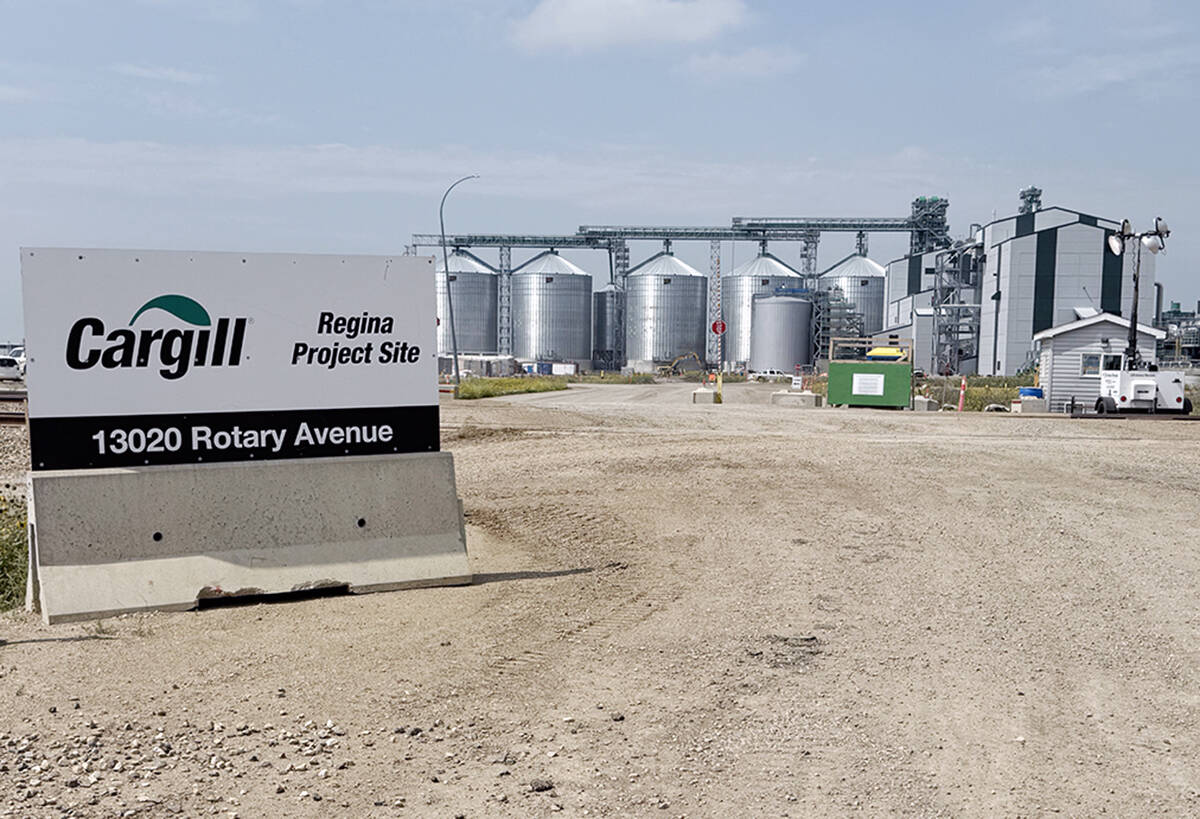
Cargill’s Regina crush plant should help offset loss of China demand
Cargill’s new Regina crush facility is expected to help raise domestic demand for Canadian canola just as China, usually Prairie growers’ top export buyer, raises a new tariff wall.
“I would say more than 90 percent of the farmers have used it as a management tool for the last 15 years,” said Brian Bell, a New Zealand ultrasound scanner who checks up to 200,000 ewes a year for pregnancy.
“It’s the main tool used for getting rid of dry ewes.”
The Saskatchewan Sheep Development Board thought it important that producers in the province had access to the service too, to help the business grow, said Gordon Schroeder, executive director of the board.
“There’s some real cost benefits to doing it and it’s something that’s not been offered in the province,” he said.
In fact, the sheep development board believed it was so important that it asked Karen Bannow of Bak Ultrasounding to add ultrasound pregnancy testing to her list of services. She also does embryo transfers in cattle on her farm, artificial insemination and carcass scanning in beef cattle.
That has placed the Saskatchewan sheep board in opposition to the province’s veterinary association.
Curt Hagele, a veterinarian and registrar with the Saskatchewan Veterinary Medical Association, said the rules are clear.
“It’s a veterinary procedure. It has to be done by a veterinarian or by a technologist or technician under the supervision of a veterinarian,” said Hagele.
Schroeder said the sheep industry is in a difficult position. Veterinarians don’t want others to do pregnancy scanning, but are not willing to provide the services themselves. Few vets are willing to pay $20,000 for the equipment needed to diagnose multiple births in sheep.
Bannow said she’d like to work with veterinarians to provide the service.
“If the veterinarians want to work with me and the vet association wants to work with me, fine. I would love to have someone in the vet college backing me. A lot of vets I know do not have their own ultrasound machines and don’t want to work on sheep,” said Bannow, who uses a multipurpose scanning machine that is also used to do carcass measurements in cattle.
In Ontario, two technicians are certified by the Ontario Veterinary Association to diagnose pregnancy in sheep and goats. Len Hilderley of Waterloo said when he started testing 12 years ago, the association recognized pregnancy scanning was a skill that required years of practice and created a special certification under the veterinarian’s umbrella.
“It’s very hard to get enough numbers as a Canadian scanner to develop and have the kind of experience needed,” said Hilderley, who on his best year has only scanned 40,000 sheep and goats for pregnancy.
“It is very specialized,” said Hilderley, who travelled to New Zealand twice for training.
When Saskatchewan sheep producer Phil Smith saw the advertisement for scanning services in the Saskatchewan sheep board’s newsletter, he was thrilled. In the United Kingdom, where he also raised sheep, pregnancy scanning was a regular management tool.
“It’s a real asset when you have high numbers of sheep,” said Smith, who farms near Maryfield, Sask.
But the success rate was not as accurate as he had hoped when he hired Bannow. Ewes declared open turned out to be pregnant and ewes diagnosed with multiples had singles.
“The results were dreadful,” said Smith.
In New Zealand, Bell said farmers now expect at least 98 percent accuracy but it wasn’t always an accurate science.
Bell now has a strict protocol. Each year he sends his clients a letter asking for the exact date the ram was turned in with the ewe and the number of ewes. He then schedules his visits to be 80 to 90 days from that date, the only time to get reliable data from the scan.
From zero to 35 days, the ultrasound cannot pick up the pregnancy. Ewes more than 90 to 100 days pregnant cannot be scanned because the bones of the lambs start to calcify and cast a shadow on the screen, making it difficult to count the number of lambs carried.
Bell also requires the sheep to be off feed at least overnight to allow for a better ultrasound picture. On most days during the pregnancy season, Bell aims to scan 3,000 ewes a day.
“It’s just practice that makes perfect. I spend seven days a week from dark to dark for three months at it. It’s a hard and difficult job.”
Added to the difficulty in Canada is the variety of sheep breeds that have multiple births. It’s easier to count ewes that have zero, one or two fetuses, but harder to catch the threes and fours, he said.
Ilena Wenger, a veterinarian with OCF Livestock Reproductive Services in Bowden, Alta., has lobbied her provincial association to allow non-veterinarians to provide ultrasound for sheep.
“I am a vet and I don’t think it should only be veterinarians. It’s too expensive for veterinarians to do it. I’ve been trying to get the Alberta association to get some sort of system to certify others, but they won’t even entertain the notion,” she said.
“It’s quite frustrating for me. I can understand internal surgeries and medicines have to be veterinarians’ domain, I get that, but when you ultrasound sheep it’s always transabdominal, which means it’s on the outside of the abdomen. There is minuscule, if any risk to the animal, even by a bad operator. The worst that can happen is you’re wrong.”
Wenger said the sheep associations, including Saskatchewan, need to work harder to convince the veterinary associations to be more like Ontario and allow non-veterinarians to provide the service. They shouldn’t encourage anyone to provide the service until it’s legal.
Schroeder said the sheep board plans to send Bannow for more training to improve her skills. They’ve also talked to Saskatchewan’s minister of agriculture to provide more help for the industry.






